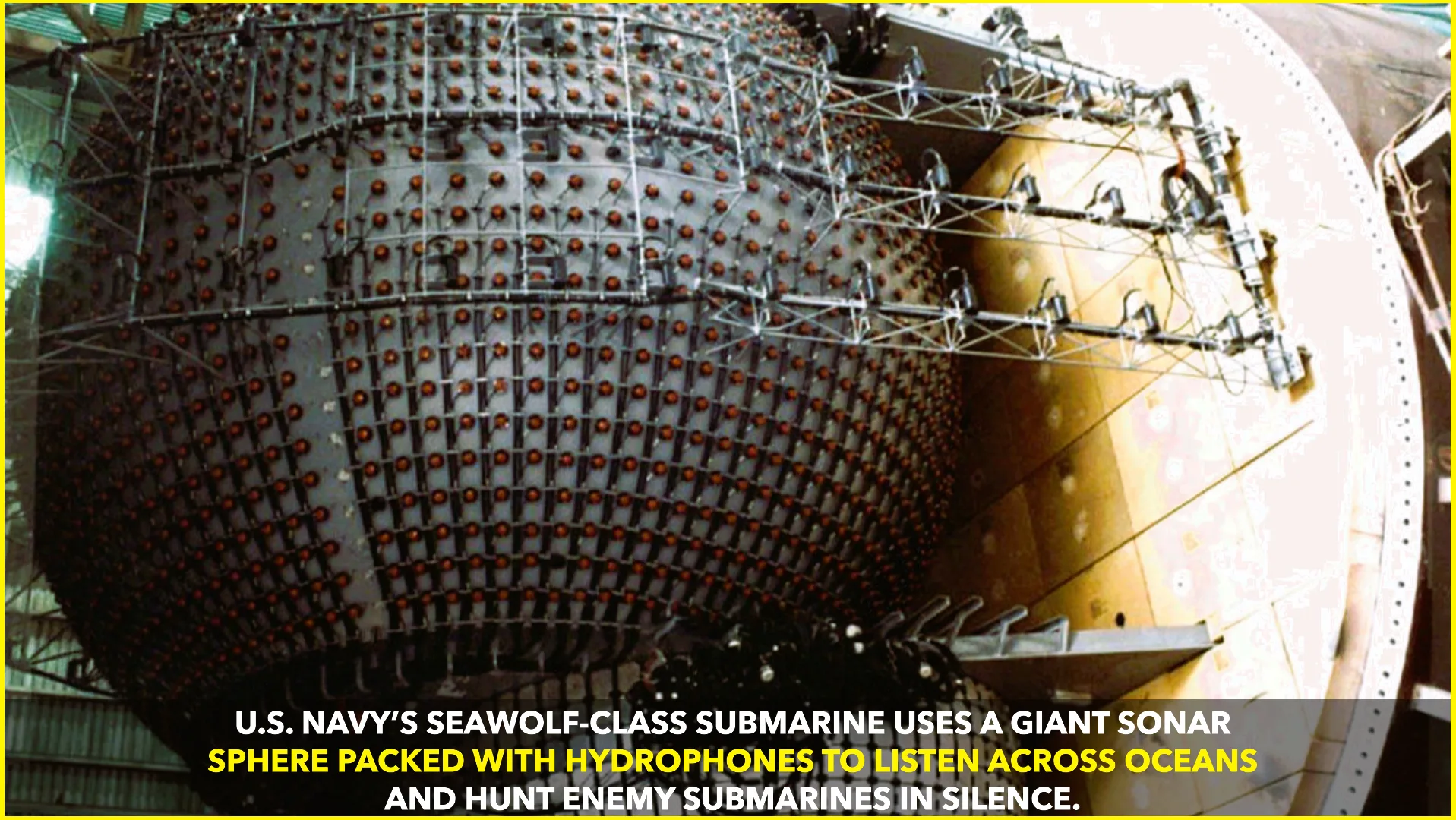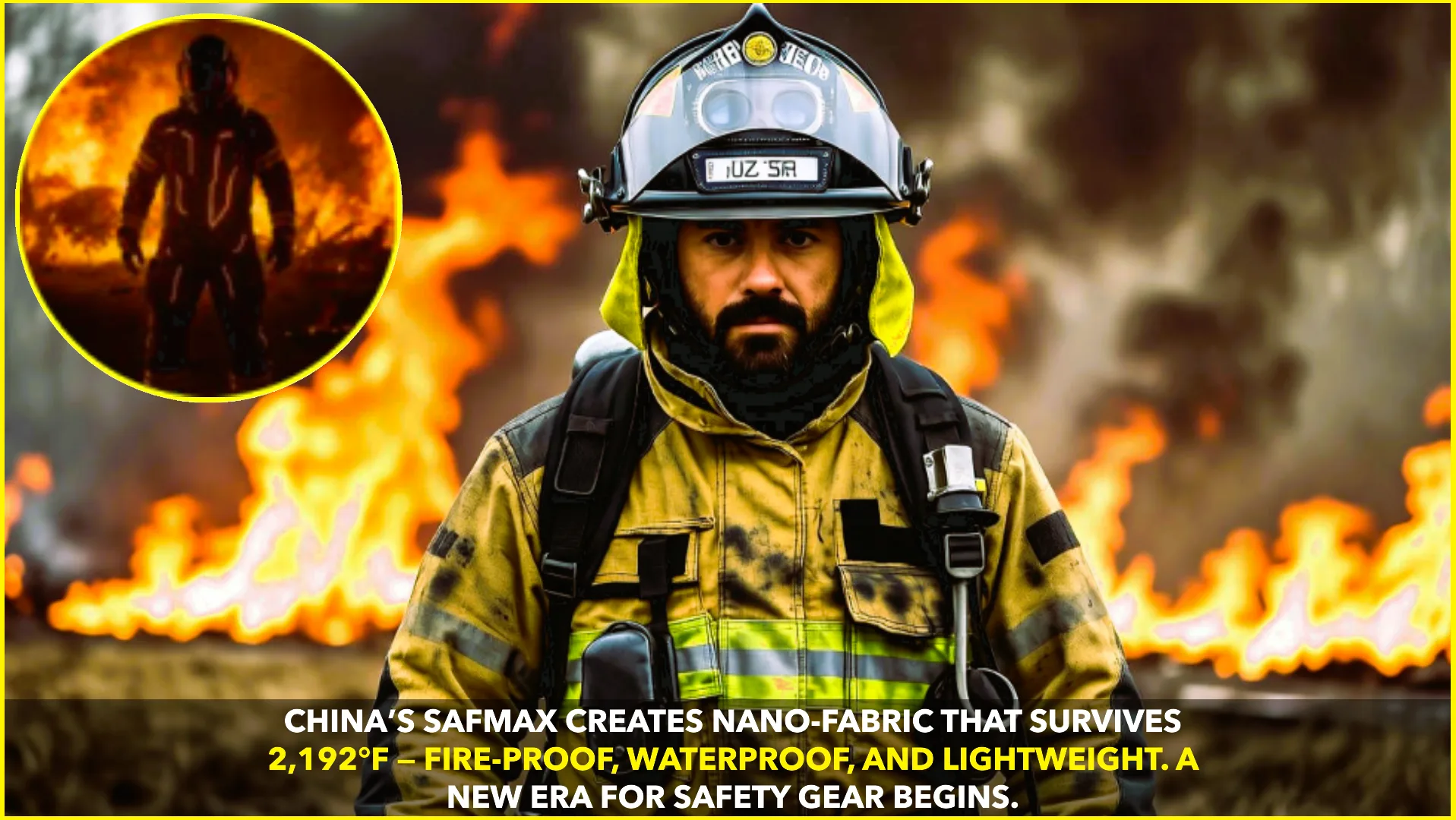Seawolf’s Secret Weapon: The Sonar Sphere
Deep beneath the ocean’s surface, silence is power. For decades, the United States Navy has relied on one of its most formidable undersea tools—the Seawolf-class nuclear attack submarine. At the heart of its stealth lies a massive sonar sphere mounted at the bow, a technological marvel packed with thousands of hydrophones. This sphere, often described as the submarine’s “ears,” enables it to detect even the faintest sounds across the ocean, from the propeller hum of enemy submarines to the distant rumble of a merchant ship.
The sonar sphere is not just large—it is enormous, dominating the forward section of the Seawolf. During assembly, photographs reveal its sheer size, appearing almost as wide as the submarine’s hull itself. This system gives the submarine an extraordinary edge in acoustic detection, making it one of the quietest and most capable designs ever built.
A Submarine Like No Other
The Seawolf class was conceived during the Cold War as the next generation of U.S. nuclear attack submarines. With the Soviet Union developing quieter and deadlier submarines, the U.S. Navy needed a vessel that could outmatch them in silence, speed, and detection.
Introduced in the 1990s, the Seawolf class represented a leap forward. These submarines were designed to operate undetected in the world’s oceans while tracking adversaries over vast distances. Measuring about 353 feet in length and displacing over 9,000 tons submerged, they combine immense power with extraordinary stealth.
One of the defining features of the Seawolf is its acoustic quietness. Naval experts have often described it as one of the most silent submarines ever built. Its design minimizes noise from machinery and propellers, while the sonar sphere enhances its ability to pick up sounds that would go unnoticed by others.
How the Sonar Sphere Works
The bow-mounted sonar sphere is essentially a giant listening device. Inside are thousands of hydrophones—sensitive underwater microphones—that can detect vibrations and noise across an immense range. These hydrophones process acoustic signals and feed the information to the submarine’s advanced combat systems, allowing operators to “hear” the ocean with incredible precision.
This capability gives the Seawolf a decisive edge in submarine warfare. It can track enemy submarines long before being detected itself. In naval strategy, that early detection is crucial: knowing the enemy’s position without revealing your own is the ultimate advantage.
Beyond Warfare: Guardian of the Seas
While the sonar sphere is primarily a weapon of war, its potential extends to broader uses. Submarines equipped with advanced sonar can also monitor undersea activity such as shipping routes, marine life movements, and even natural phenomena like seismic activity.
For the U.S. Navy, however, the main mission remains deterrence and defense. Seawolf-class submarines are tasked with patrolling strategic waters, shadowing potential adversaries, and ensuring America’s control of the seas. In a world where underwater threats continue to grow, this hidden technology acts as a silent guardian.
Cost and Legacy
Building such advanced submarines came at a steep price. Each Seawolf submarine reportedly cost around $3 billion—making them some of the most expensive submarines ever constructed. Originally, the Navy planned to build 29 of them, but with the end of the Cold War, the program was cut short. Only three Seawolf-class submarines were completed: USS Seawolf (SSN-21), USS Connecticut (SSN-22), and USS Jimmy Carter (SSN-23).
Despite their limited numbers, these submarines remain an elite force within the Navy’s undersea fleet. They represent a bridge between the Cold War-era submarine race and the modern era of naval stealth warfare.
Trusting the Hidden Guardian
The image of the sonar sphere during assembly offers a rare glimpse into a world usually hidden beneath the waves. To the average observer, it may look like a massive steel ball. But to naval strategists, it represents unmatched listening power—technology that can decide who controls the oceans.
As maritime tensions grow worldwide, the Seawolf-class submarines continue to serve as a reminder of how advanced engineering and hidden technology shape global security.
Would you trust this silent sonar guardian to keep the oceans safe?
Source: U.S. Navy fact sheets, Naval History and Heritage Command, Military.com










